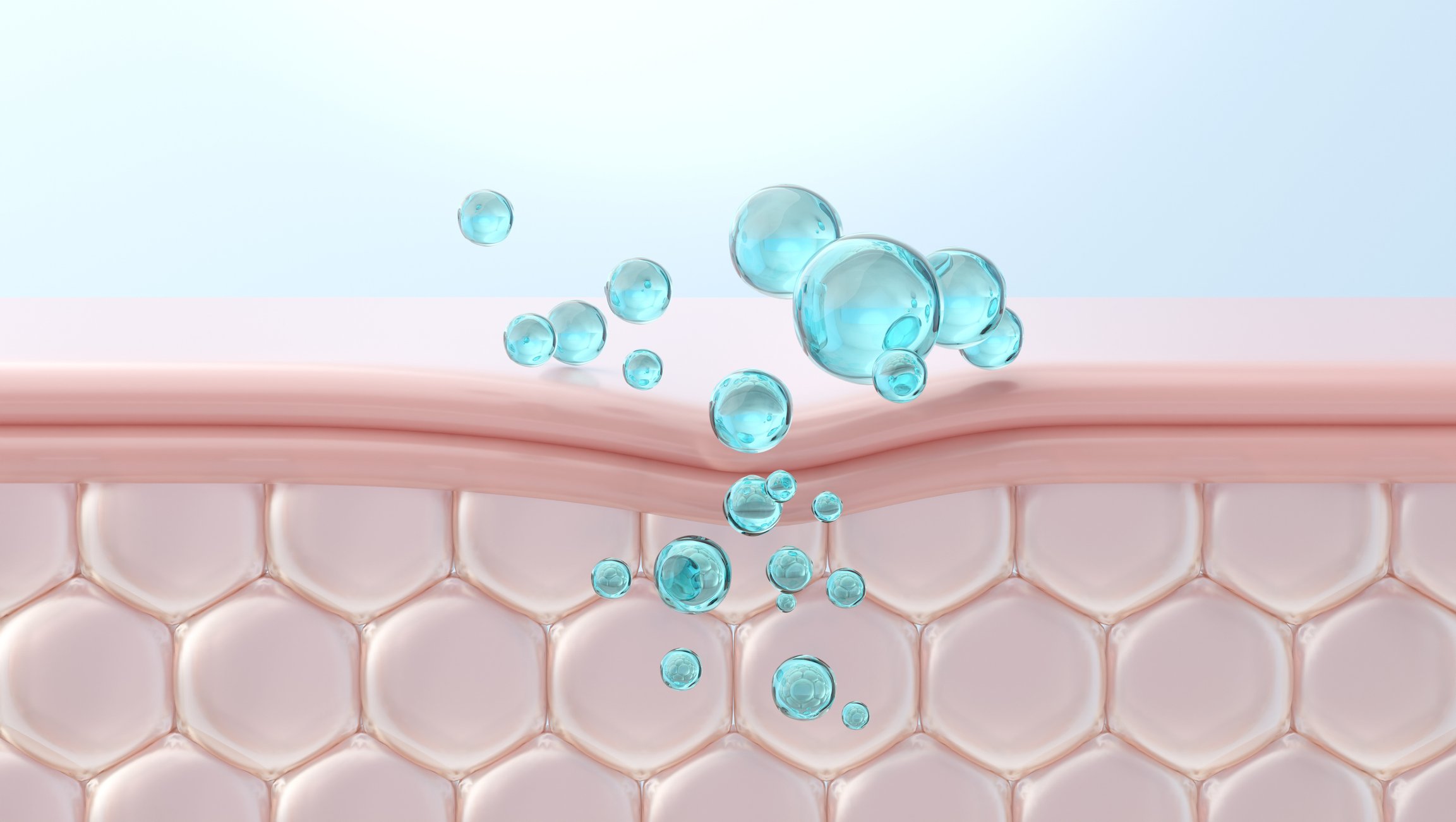ECHELON-1 is the first positive data available on brentuximab vedotin in first-line Hodgkin lymphoma. And things are also progressing in CLL. Chemotherapy-free variants hold their own in recurrences.
Chronic lymphocytic leukemia (CLL) typically occurs later in life, where comorbidities have a critical impact on treatment choices. Patients without deletion 17p or TP53 mutation receive nowadays in the first line a so-called chemoimmunotherapy, e.g. bendamustine combined with rituximab (BR). If a sufficiently long remission period is achieved, the initial therapy is generally repeated in the event of a relapse. Alternatively, ibrutinib and idelalisib with rituximab are used in the relapse situation. The MURANO trial, the preliminary results of which were presented at the congress, now raises the prospect of another chemotherapy-free option for the first time: venetoclax combined with rituximab.
In CLL, apoptosis does not occur normally. CLL cells overexpress the so-called BCL-2 protein, which is anti-apoptotic. Conversely, inhibition of BCL-2 drives tumor cells into apoptosis. The selective inhibitor venetoclax does just that, targeting BCL-2-expressing cancer cells. The oral active ingredient has already been approved in Europe and the United States, but not yet in Switzerland.
High response rates have already been achieved with monotherapy in relapsed/refractory CLL – even in high-risk populations with del(17p). The proportion of complete remissions and MRD negativity (no residual disease activity in the blood) appeared to be even improved with the addition of rituximab. Now, data from the Phase III MURANO study, published for the first time, also confirm the assumption:
- In the primary endpoint, progression-free survival (PFS), the planned interim analysis showed a clear advantage for venetoclax and rituximab over bendamustine and rituximab. The researchers found a significant 83% risk reduction for progression or death with the former combination compared with the latter. After two years, 84.9% vs. 36.3% were still alive without progressive disease.
- The benefit applied to all subgroups (age, del[17p], p53 mutation, number of prior therapies, refractory vs. relapse, IgVH mutation status, geographic region).
- The independent review also found a significant HR of 0.19 in PFS.
- In secondary endpoints, the drug combination was also superior: risk of death reduced by 52%, overall response rate 93.3% vs. 67.7%, of which complete remissions (including CRi) in 26.8% vs. 8.2%, MRD negativity in blood 83.5% vs. 23.1%.
The total of 389 study participants (ECOG PS ≤1) were allowed to have received one to three prior lines of treatment, at least one of which had to have been chemo(immuno)therapy. Of course, bendamustine was also allowed to precede the study as part of a first-line combination, but patients had to have responded for at least two years. The majority had received a prior line, and the median age was approximately 65 years.
The main problem with venetoclax therapy, tumor lysis syndrome at therapy initiation, was attempted to be mitigated by a low starting dose with dose escalation over several weeks. There were still 3.1% vs. 1.1% grade ≥3 adverse events occurring in the setting of tumor lysis syndrome and one clinical tumor lysis syndrome each. Events leading to death occurred in 5.2% vs. 5.9% of patients.
Positive conclusion
The effect is impressive and remarkably consistent across all subgroups. A registration extension in the countries mentioned is thus to be expected. Chemoimmunotherapy was clearly beaten in the relapse setting. MRD rates were durable and well above what is known, although the follow-up period of just over two years is of course still extendable. While rituximab was administered over six 28-day cycles, patients took venetoclax for a maximum of two years (provided there was no progression). What happens after that? What was the contribution of rituximab to the positive study outcome? And can therapy in this setting possibly be limited to a certain period of time in the future, as is known from first-line chemoimmunotherapy? The authors primarily consider time to MRD negativity and early deep response as indicators of good sustained control possibly beyond the end of daily venetoclax therapy. So far, the follow-up data after more than two years are promising.
However, this also leads one directly to a possible criticism of the study. Was the PFS benefit also so pronounced because a maintenance phase with venetoclax was integrated in the venetoclax/rituximab arm, in contrast to the comparator arm? However, the fact that the curves were still divergent after two years tends to argue against this hypothesis.
It should be noted that the remission rates from the independent review differed substantially from those of the investigators. While overall response rates were comparable here at 92.3% vs. 72.3%, CR/CRi were significantly lower at 8.2% vs. 3.6% (which was mainly due to different interpretations of CT scans).
The authors consider the side effect profile to be controllable. Tumor lysis syndrome can be significantly reduced in its occurrence and severity by systematic risk assessment, low starting dose with dose escalation, and systematic follow-up. Febrile neutropenia and grade 3-4 infections were not more frequent in the study arm, but severe neutropenia was, at just over 58%.
There are other contenders
The MURANO results were flanked by another study called CLARITY, which also vied for the attention of the several thousand ASH attendees.
Like MURANO, CLARITY is in the relapsed/refractory setting of CLL. This time, the combination of venetoclax and ibrutinib was to be studied. Again, the question was whether increased MRD negativity might allow a shortening of therapy in the future. While venetoclax is mainly responsible for tumor cell apoptosis, ibrutinib mainly counteracts tumor proliferation/lymph node enlargement. Ibrutinib is an oral Bruton tyrosine kinase inhibitor that blocks B-cell receptor signaling via the kinase switch site. The two agents thus target two main pillars of CLL pathogenesis and complement each other optimally, at least in theory. The combination is obvious – and according to the interim analysis from CLARITY, it actually seems to work: MRD negativity was seen in 37% and 32% of the 38 patients who were amenable to testing at eight months (six months of combination therapy), in blood and plasma, respectively. Bone marrow. Considering only those with early relapse after FCR/BR pre-therapy (traditionally a group with poor prognosis), impressive values of 52% resp. 41%. All from this group had responded to the combination (the CR here was 53%). Those patients after idelalisib therapy showed comparable values. Patients will now continue to receive the agents for as long as it took to achieve MRD negativity.
A tumor lysis syndrome event occurred, requiring a pause in dosing. Overall, the authors rated the safety profile as good. No obvious summation of toxicity was found. Everything points to a potent synergy between the two drugs. A phase III trial was modified accordingly to test the duo in the first-line setting. Results follow.
Participants had either shown relapse within three years after either standard chemoimmunotherapy FCR or BR, or had deletion 17p with at least one corresponding prior therapy (but not venetoclax or ibrutinib). Initially, they received ibrutinib monotherapy, followed by additional venetoclax at slowly escalating doses.
Brentuximab vedotin convinces
ECHELON-1 is shaking up the first-line in advanced Hodgkin lymphoma. For the first time, a combination without bleomycin but with brentuximab vedotin is shown to be superior to the previously widely used standard ABVD. This is significant because bleomycin toxicity in particular can be serious in the treatment of Hodgkin lymphoma.
Studies therefore attempted to use interim PET to determine which patients with advanced disease benefited after only two cycles of ABVD (negative PET) – with subsequent discontinuation of bleomycin. Other PET-guided approaches with therapy cycle reduction (keyword escBEACOPP), with therapy escalation or early high-dose salvage therapy were tested.
Much hope was also pinned on brentuximab vedotin. This is an antibody-drug conjugate (ADC). It has the property of binding to the target molecule, internalizing into the cell and releasing the coupled toxin there (the antibody functions as a vehicle and thus kills individual lymphoma cells in a more targeted manner than systemically applied chemotherapy). It is approved in Switzerland for the relapse/refractory situation.
The hopeful drug now appears to be living up to expectations in the first-line setting: in the phase III ECHELON-1 trial, it showed a significant risk reduction of more than 20% (HR 0.770 and 0.725) for death, progression, or “inadequate response with subsequent therapy” (objectively assessed by PET score at the end of frontline therapy) in the primary endpoint in both the independent review and the analysis of study investigators. Brentuximab vedotin had been given in combination with AVD (doxorubicin, vinblastine, and dacarbazine); the conventional comparator arm contained bleomycin plus AVD (ABVD). The study included 1334 patients with median age of 36 years with stage III (36%) and IV (64%) lymphoma. Those with a positive PET (Deauville score 5) after cycle 2 could switch to an alternative therapy.
After two years, 82.1% vs. 77.2% were alive without progression or alternative therapy, according to the independent review. Among others, those with an International Prognostic Score of 4-7 (26% overall) and stage IV patients particularly benefited from the new combination. The risk of death was not (yet) significantly reduced in the interim analysis, but survival rates tended to be higher. All other secondary endpoints, including rates of complete remission, PET negativity after cycle 2, and others, also showed a trend toward the new combination. Overall, fewer patients in the trial arm had to undergo further therapy than in the comparator arm (approximately one-third fewer chemotherapies/high-dose chemotherapies with transplantation each).
Because febrile neutropenia was more common in the study arm, G-CSF primary prophylaxis was recommended toward the end of the study at inclusion. Seven of the nine deaths in the study arm were associated with neutropenia, all of which occurred in patients who had not received prophylaxis. One is therefore recommended, according to the study authors. Pulmonary toxicities are the most serious adverse events associated with bleomycin therapy. Eleven of the 13 deaths in the comparison arm were due to or associated with it. Pulmonary toxicity in the test arm was lower, as expected.
Relevance of the results
Overall, no new unknown toxicities occurred, which is why the authors consider the combination with ADC clearly superior for first-line use. Attention must be paid to peripheral neuropathies, which must be adequately addressed, e.g., with dosage adjustments.
However, the relevance of the study results was also critically questioned at the congress. Finally, a good 80% of patients would show a negative PET after two ABVD cycles and could thus avoid the pulmonarily dangerous bleomycin in the remaining four cycles anyway. This corresponds to the data from RATHL [1].
He also said it was questionable whether brentuximab, if already used in the first-line setting, could continue to be used in the original setting. The price will also play a role in the end, as Brentuximab is initially more expensive than ABVD (excluding the supportive measures). Pharmaceutical economic analyses are currently pending. So some questions remain unanswered for the time being. What is certain is that ECHELON-1 has opened a door – the discussion in the field of first-line therapy has thus been (re)opened.
The study was published in the New England Journal of Medicine [2] concurrent with the congress presentation.
Source: 59th ASH Meeting, December 9-12, 2017, Atlanta.
Literature:
- Johnson P, et al: Adapted Treatment Guided by Interim PET-CT Scan in Advanced Hodgkin’s Lymphoma. N Engl J Med 2016; 374: 2419-2429.
- Connors JM, et al: Brentuximab vedotin with chemotherapy for Stage III or IV Hodgkin’s lymphoma. N Engl J Med 2017 Dec 10. DOI: 10.1056/NEJMoa1708984. [Epub ahead of print].
InFo ONCOLOGY & HEMATOLOGY 2018; 6(1): 29-31.












